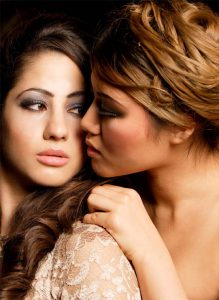When shooting with artificial light, you have a lot of creative control over lighting, and it takes a bit of practice to get your lighting ratios just right. It may sound a little complex to the newbie, but once you get the basics right, you are free to experiment with your own creativity.
Basically, a studio set up has one main light source called the ‘key’ light which poses as the primary light source to light up your subject. All other lights are used to enhance certain areas within your composition, and also give you control over contrast. Lets imagine a very simple set-up with one key light and one fill light, to soften the shadow areas, coming in from the opposite direction of the key light. If both light sources were set to equal intensity, you would get flat, shadowless light. This would be a 1:1 lighting ration. Usually, this would not be what you are looking for. Now gradually decrease the power of the fill light maintaining exposure values set for the key. As you decrease fill light intensity, your shadows darken and contrast increases. If you are looking for a really high contrast image, you could use even a single light. Some amount of shadows can be lightened with something as simple as a reflector.

Another aspect of studio lighting that photographers use is to separately light the model and background. This creates a separation between model and background, accentuating the feeling of space. You can achieve this by using cutters to prevent the key light from spilling on to the background, and use other lights to control the brightness (or darkness/contrast) level of the background…et another way to create contrast or separation between model and background is to let the ambient light illuminate the background while your studio light illuminates the model. Metering can get tricky in this case, as you need to account for ambient light (using shutter speed), and flash (using aperture control), but the results are well worth the effort. Take for example the accompanying images of models photographed by KAPA mentor Karthik Srinivasan. While one image is extremely high contrast with a black background, the other displays model-background separation using mixed light sources.
Try your hand at contrast control by varying the intensity of secondary light sources. There is no right or wrong to it, the effect you get is purely a matter of perception and preference…